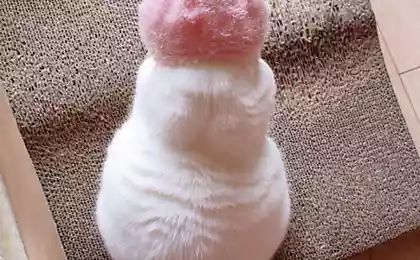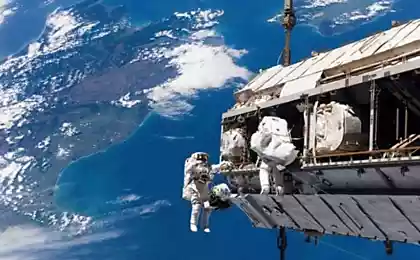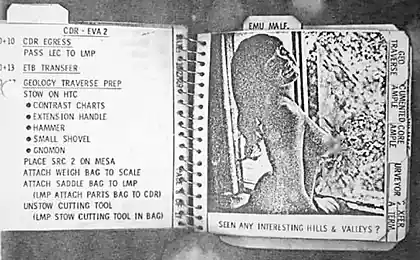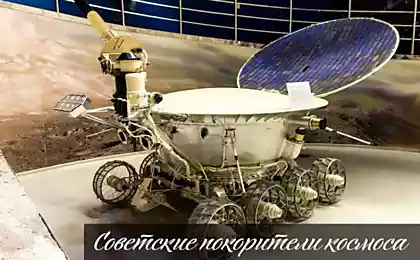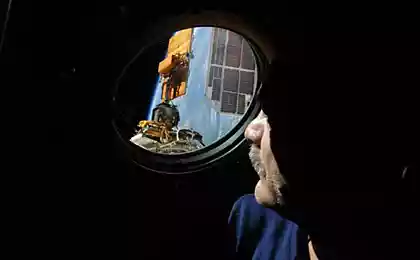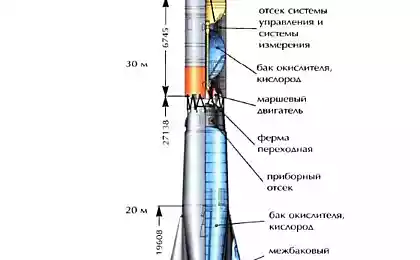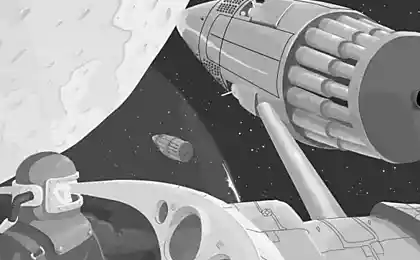834
10 ways in which open space can kill
Space has been and remains a very hostile environment for cheloveka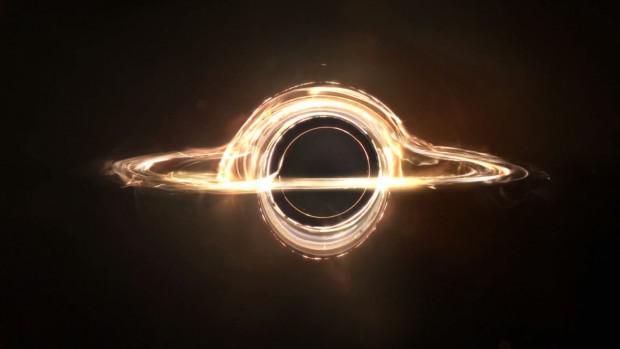
recently in rolling out the film Christopher Nolan's "Interstellar". The picture of the dying Earth and space flight immediately became the subject of heated discussion in the World Wide Web. Someone thinks this film almost best film of the decade. Someone on the contrary, vehemently hates this picture, and makes every effort to emphasize the various blunders director. But both supporters and opponents agree on one of the film: the cosmos - an extremely dangerous place, and how to die there very much. Some of these methods are listed below.
1. Asfiksiya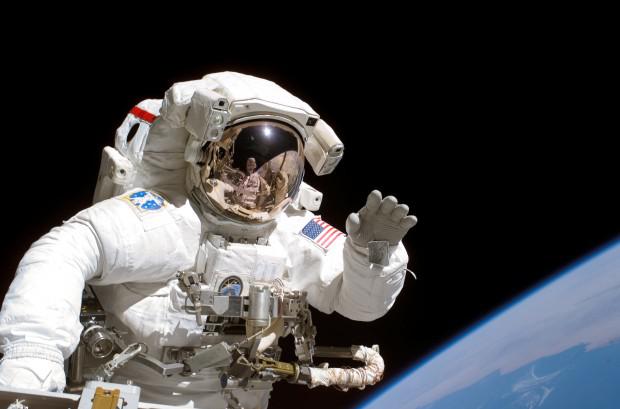
If an astronaut suddenly otstegnёtsya of the ship, in his suit he will be able to breathe for at least another 8, 5 hours. But if the suit would be defective, or if for some other reason a person would be exposed to the vacuum, it can lose consciousness within 15 seconds. Death comes quickly, and it demonstrates a classic example: in 1971, three Soviet cosmonauts were in the descent module, at an altitude of 167 km. This adjustment has failed one of the valves life support system, whereby the air in the vehicle left. The lander touched down automatically. When the capsule is opened, all the astronauts in it were dead.
2. Razgermetizatsiya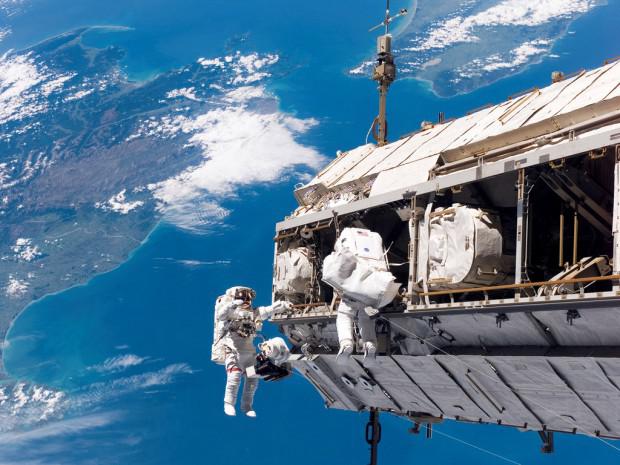
If an astronaut was in a vacuum, without any protection, since it may occur, and other terrible things. The absence of air pressure will lead to the fact that last breath astronaut just tear his lungs. However, the water in the soft tissues of the human will rapidly evaporate. As a result, the body begins to swell rapidly, but the skin, which has a fair margin of safety, do not allow the body to burst like a balloon.
In the veins of any bubbles, because of which blood flow is disturbed. Then occur bowel, stomach and bladder (this is what happens with dogs in one study. There animals were kept in a vacuum less than 90 seconds. All of these effects disappear as soon as air supply was resumed, however, the dogs still died).
And if it's not too bad, there is a condition known as "ebbulizm." With a sharp decrease in pressure in the body fluids starts bubbling. In other words, in the language of saliva astronaut literally boils.
3. The "Space tan"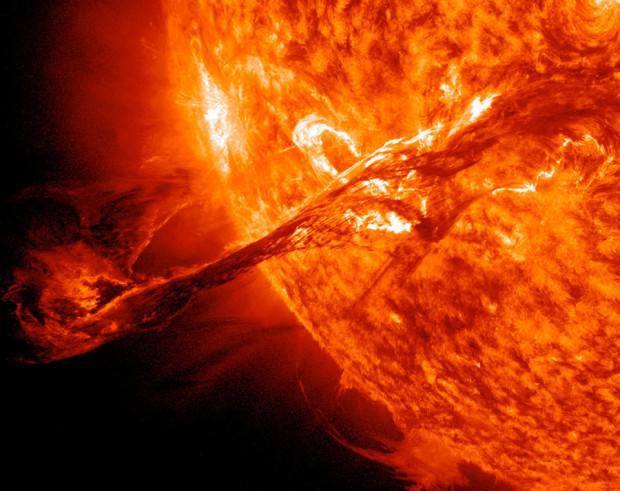
The sun can radiate energy over a very wide wavelength range. It goes away and ultraviolet radiation, which we can neither see nor feel. In general, ultraviolet light - it's not so bad, because it helps the body produce vitamin D, but if the sun too long, the radiation can cause burns and various diseases, such as cataracts, disorders of the immune system, skin cancer and premature aging.
If the open area of the skin subjected to the influence of an astronaut sunlight in space (where, unlike Earth, no protective ozone layer), the astronaut will receive severe burns. However, this will not happen until the astronaut suit.
4. The destruction of the cells due to the impact radiatsii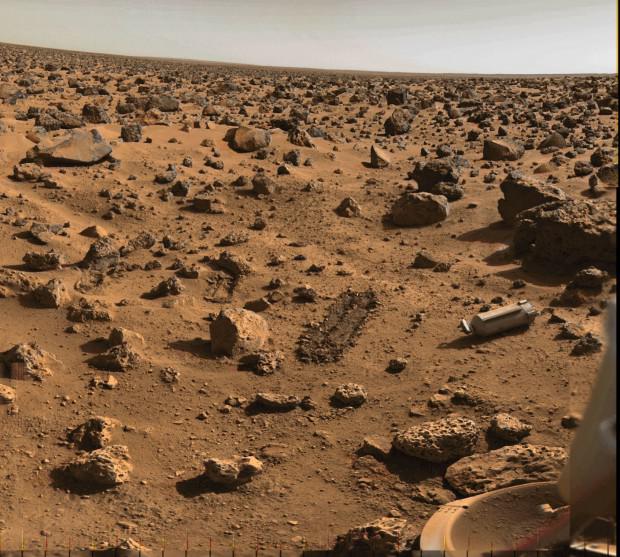
Even if you do not get burned astronaut, space will still bombard him the most different types of harmful radiation.
Automatic probe sent to Mars, showed that if the same journey lasting 253 days will make a living people, it will be all the same, as if they did a CT scan of the entire body every 5-6 days. Experts say that if in the near future not found a reliable way to protect astronauts in space, then the likelihood that they will die from radiation sickness, is very high. And even if this does not happen, they will almost certainly earn cancer.
5. Death of Space musora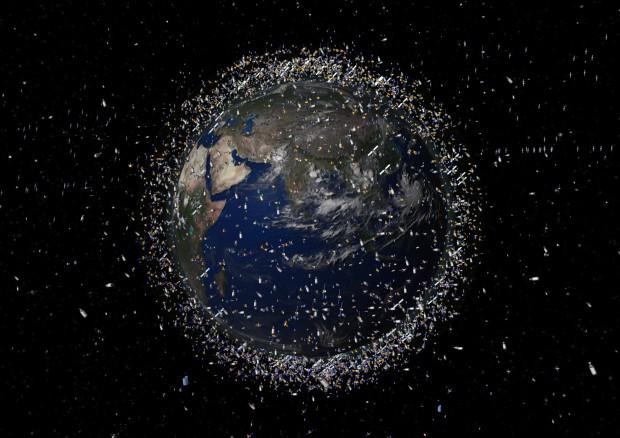
Garbage in space can be a great threat to life. In March 2012, the six astronauts on the International Space Station were forced to take refuge in escape pods after received a warning that in their side flew the wreckage of the old satellite.
And every year the situation is getting worse: Now NASA track the order of 500,000 large debris orbiting the Earth at a speed of 28,164 km / h. But it is likely that there are more small debris and that NASA is simply unable to detect. These fragments can very easily destroy the spacecraft.
6. Breathing Space pyli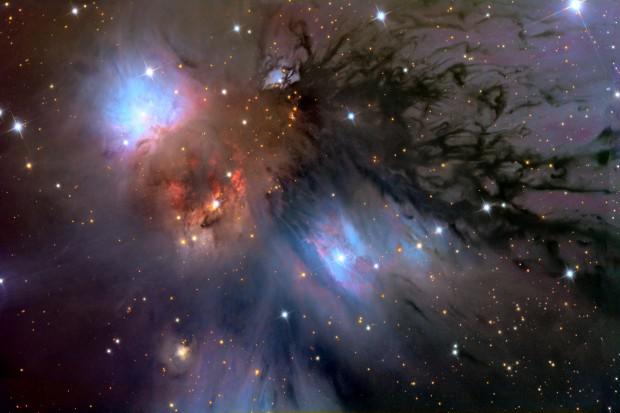
It seems that the dust is not a big problem compared with asphyxia, high doses of radiation and other hazards. However, since the days of the "Apollo" NASA knows that astronauts due to inhalation of cosmic dust suffers from a disease resembling earthly "hay fever».
Mars has the smallest dust, which contains fine particles of silicate. They have a static charge and cling to the whole row. If an astronaut inhales this dust, it gets into the lungs and there analogue of the well-known diseases of miners.
7. Weakened immune sistemy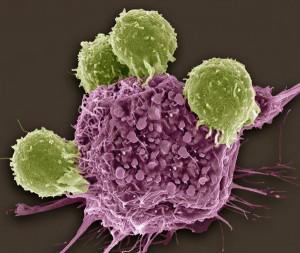
In space, the astronauts get sick very easily. For example, 15 of the 29 astronauts "Apollo" was picked up viral or bacterial infections or during the flight or immediately after returning to Earth. This is because space is very bad for the immune system. Microgravity intervenes in different processes in the body, in particular, prevents the development of white blood cells that protect the body against infection. If a person is exposed to a virus or pathogenic bacteria on Earth, his "alarm system" uses 99 different genes that are "asked" to white blood cells attacking threat emerged.
And in 2005, researchers at the University of California found that simulated microgravity can "turn off" 91 of these 99 genes. The effect was so serious that experts have compared it with the effect of HIV. At long interplanetary flight situation may be even worse, since there microgravity will operate for a couple with radiation.
8. Destruction skeleta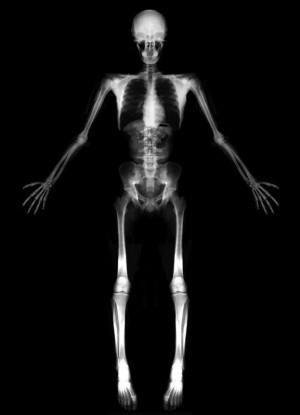
Human skeleton may seem hard, but it is not so. On Earth, the process of bone loss goes in parallel with the process of recovery. When a man grows old, this balance is sometimes broken, and then the bones begin to weaken. This is called osteoporosis. Unfortunately, during prolonged stay in microgravity there is an effect of "aging". The first astronauts lived in space for several months, had lost nearly 20% of their bone mass. Microgravity can make astronauts bones so weak that they can not support the authorities after returning to Earth, and easy to break.
9. Problems zreniem
About 60% of astronauts to the International Space Station point decrease in visual acuity. Perhaps this is due to swelling of the optic nerve or due to changes in the structure of the eye, caused by the space environment. For example, in 2007, astronaut Bob Thirsk Canadian reported that the sharpness of his vision has fallen so much that he had to use special camera focuses.
In some cases, according to the researchers, there may be more serious eye damage. No space is unlikely to make an astronaut totally blind, but can "put" his sight is so strong that in the world he may die, for example, because of an accident. Now NASA specialists are trying to find a solution to this problem. They developed a special adjustable glasses for astronauts, which should help preserve vision.
10. Problems with psihikoy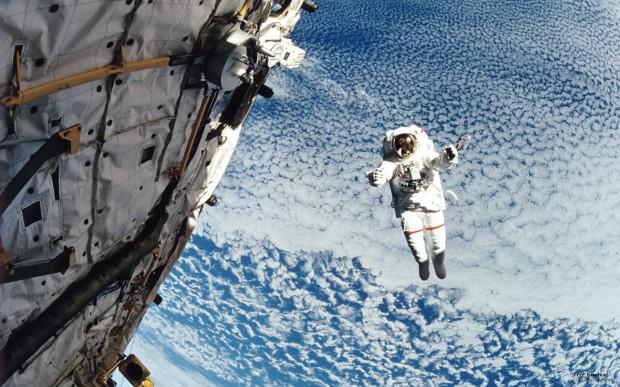
Space presses on the psyche and astronauts. They may have difficulty adapting to microgravity, they may have fatigue and insomnia due to circadian rhythm disorders. There is also an intense workload, work under high pressure and psychological difficulties that inevitably arise when a group of people find themselves trapped in a confined space for weeks or even months.
Try to choose to fly astronauts psychologically stable, able to work well under stress space, moreover, closely monitored the behavior of astronauts in flight, trying to identify mental health problems in the early stages. Although until now, serious crises have been identified, people occasionally suffer from mood swings and other violations. And the evidence shows that the longer the flight, the greater the risk to the mental health of astronauts.
via factroom.ru

recently in rolling out the film Christopher Nolan's "Interstellar". The picture of the dying Earth and space flight immediately became the subject of heated discussion in the World Wide Web. Someone thinks this film almost best film of the decade. Someone on the contrary, vehemently hates this picture, and makes every effort to emphasize the various blunders director. But both supporters and opponents agree on one of the film: the cosmos - an extremely dangerous place, and how to die there very much. Some of these methods are listed below.
1. Asfiksiya

If an astronaut suddenly otstegnёtsya of the ship, in his suit he will be able to breathe for at least another 8, 5 hours. But if the suit would be defective, or if for some other reason a person would be exposed to the vacuum, it can lose consciousness within 15 seconds. Death comes quickly, and it demonstrates a classic example: in 1971, three Soviet cosmonauts were in the descent module, at an altitude of 167 km. This adjustment has failed one of the valves life support system, whereby the air in the vehicle left. The lander touched down automatically. When the capsule is opened, all the astronauts in it were dead.
2. Razgermetizatsiya

If an astronaut was in a vacuum, without any protection, since it may occur, and other terrible things. The absence of air pressure will lead to the fact that last breath astronaut just tear his lungs. However, the water in the soft tissues of the human will rapidly evaporate. As a result, the body begins to swell rapidly, but the skin, which has a fair margin of safety, do not allow the body to burst like a balloon.
In the veins of any bubbles, because of which blood flow is disturbed. Then occur bowel, stomach and bladder (this is what happens with dogs in one study. There animals were kept in a vacuum less than 90 seconds. All of these effects disappear as soon as air supply was resumed, however, the dogs still died).
And if it's not too bad, there is a condition known as "ebbulizm." With a sharp decrease in pressure in the body fluids starts bubbling. In other words, in the language of saliva astronaut literally boils.
3. The "Space tan"

The sun can radiate energy over a very wide wavelength range. It goes away and ultraviolet radiation, which we can neither see nor feel. In general, ultraviolet light - it's not so bad, because it helps the body produce vitamin D, but if the sun too long, the radiation can cause burns and various diseases, such as cataracts, disorders of the immune system, skin cancer and premature aging.
If the open area of the skin subjected to the influence of an astronaut sunlight in space (where, unlike Earth, no protective ozone layer), the astronaut will receive severe burns. However, this will not happen until the astronaut suit.
4. The destruction of the cells due to the impact radiatsii

Even if you do not get burned astronaut, space will still bombard him the most different types of harmful radiation.
Automatic probe sent to Mars, showed that if the same journey lasting 253 days will make a living people, it will be all the same, as if they did a CT scan of the entire body every 5-6 days. Experts say that if in the near future not found a reliable way to protect astronauts in space, then the likelihood that they will die from radiation sickness, is very high. And even if this does not happen, they will almost certainly earn cancer.
5. Death of Space musora

Garbage in space can be a great threat to life. In March 2012, the six astronauts on the International Space Station were forced to take refuge in escape pods after received a warning that in their side flew the wreckage of the old satellite.
And every year the situation is getting worse: Now NASA track the order of 500,000 large debris orbiting the Earth at a speed of 28,164 km / h. But it is likely that there are more small debris and that NASA is simply unable to detect. These fragments can very easily destroy the spacecraft.
6. Breathing Space pyli

It seems that the dust is not a big problem compared with asphyxia, high doses of radiation and other hazards. However, since the days of the "Apollo" NASA knows that astronauts due to inhalation of cosmic dust suffers from a disease resembling earthly "hay fever».
Mars has the smallest dust, which contains fine particles of silicate. They have a static charge and cling to the whole row. If an astronaut inhales this dust, it gets into the lungs and there analogue of the well-known diseases of miners.
7. Weakened immune sistemy

In space, the astronauts get sick very easily. For example, 15 of the 29 astronauts "Apollo" was picked up viral or bacterial infections or during the flight or immediately after returning to Earth. This is because space is very bad for the immune system. Microgravity intervenes in different processes in the body, in particular, prevents the development of white blood cells that protect the body against infection. If a person is exposed to a virus or pathogenic bacteria on Earth, his "alarm system" uses 99 different genes that are "asked" to white blood cells attacking threat emerged.
And in 2005, researchers at the University of California found that simulated microgravity can "turn off" 91 of these 99 genes. The effect was so serious that experts have compared it with the effect of HIV. At long interplanetary flight situation may be even worse, since there microgravity will operate for a couple with radiation.
8. Destruction skeleta

Human skeleton may seem hard, but it is not so. On Earth, the process of bone loss goes in parallel with the process of recovery. When a man grows old, this balance is sometimes broken, and then the bones begin to weaken. This is called osteoporosis. Unfortunately, during prolonged stay in microgravity there is an effect of "aging". The first astronauts lived in space for several months, had lost nearly 20% of their bone mass. Microgravity can make astronauts bones so weak that they can not support the authorities after returning to Earth, and easy to break.
9. Problems zreniem

About 60% of astronauts to the International Space Station point decrease in visual acuity. Perhaps this is due to swelling of the optic nerve or due to changes in the structure of the eye, caused by the space environment. For example, in 2007, astronaut Bob Thirsk Canadian reported that the sharpness of his vision has fallen so much that he had to use special camera focuses.
In some cases, according to the researchers, there may be more serious eye damage. No space is unlikely to make an astronaut totally blind, but can "put" his sight is so strong that in the world he may die, for example, because of an accident. Now NASA specialists are trying to find a solution to this problem. They developed a special adjustable glasses for astronauts, which should help preserve vision.
10. Problems with psihikoy

Space presses on the psyche and astronauts. They may have difficulty adapting to microgravity, they may have fatigue and insomnia due to circadian rhythm disorders. There is also an intense workload, work under high pressure and psychological difficulties that inevitably arise when a group of people find themselves trapped in a confined space for weeks or even months.
Try to choose to fly astronauts psychologically stable, able to work well under stress space, moreover, closely monitored the behavior of astronauts in flight, trying to identify mental health problems in the early stages. Although until now, serious crises have been identified, people occasionally suffer from mood swings and other violations. And the evidence shows that the longer the flight, the greater the risk to the mental health of astronauts.
via factroom.ru





